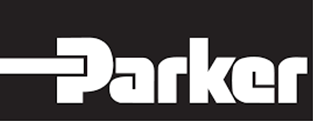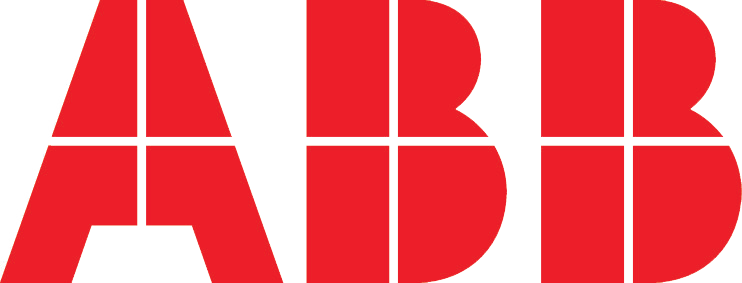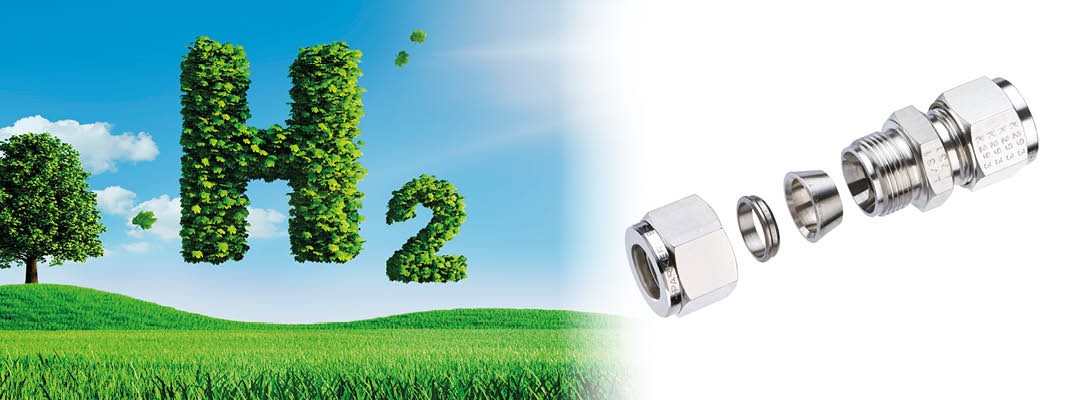Hydrogen fuel cell technology, production and infrastructure are key to helping reduce emissions worldwide. The abundance and versatility of Hydrogen can offer compelling advantages as an accessible, sustainable and efficient alternative source of energy, however, creating viable H2 applications is not without its challenges.
Hydrogen is highly flammable – more so than regular fuel – and is harder to contain than oil due to its small particle size which brings understandable safety concerns. Fittings used in Hydrogen production, Hydrogen fuel cells and refueling stations must meet key performance criteria to ensure safety, reliability, and performance in application.
1. Leak-tight connections
Safety is the primary concern in the design of hydrogen fuel cells, compressor systems and electrolyzers for hydrogen applications. Ensuring leak-free connections is paramount to the safety and integrity of the system.
Parker’s A-LOK® Two Ferrule Fittings — sometimes called twin or double ferrule fittings – comprise of a fitting body, front ferrule, back ferrule, and nut. They use a two ferrule mechanical grip design, creating leak-free tube connections easily and quickly, ideally suited to pressure and thermal cycling and vibration applications.
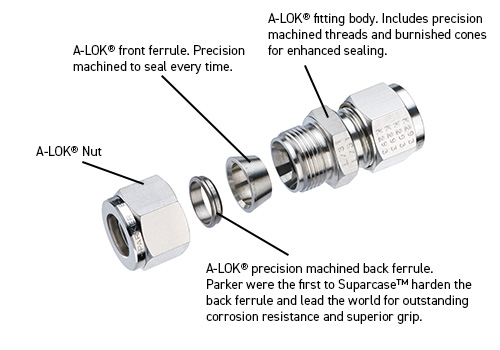
The tube is inserted into the fitting and as the nut is turned the back ferrule advances axially towards the front ferrule and applies an effective grip on the tube while the front ferrule creates a seal against the fitting and on the tubing outside diameter.
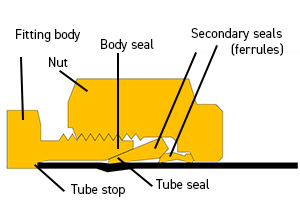
2. Material integrity
Hydrogen can be very damaging to most metallic materials, causing what is known as hydrogen damage or hydrogen attack. Hydrogen is an extremely small particle and hydrogen degradation is directly connected to its capability to be easily absorbed by metals, coupled with the high mobility those particles have at the microstructural level.
Nearly every metallic material can be susceptible to hydrogen damage, and there are several forms of hydrogen degradation. Hydrogen embrittlement cracking is the most common form and affects the production, storage and transportation of hydrogen.
It is important to address the myth that material content alone will address the correct material selection for Hydrogen service as several other factors are equally important.
To find out more about Hydrogen embrittlement download our whitepaper – Addressing the Challenge of Hydrogen Embrittlement in Metallurgy.
Hydrogen embrittlement in fittings for use in fuel cells, storage and refueling stations can be prevented. According to the International Industry Standard ISO 15916-2015, due to the fact that most metals are susceptible to different levels of H2 embrittlement, materials of construction and suitable equipment must be carefully selected to avoid failure when hydrogen exposure is anticipated. End users should pay special attention to the materials of construction and the quality of the equipment used in hydrogen fuel cells or refueling stations.
Parker has decades of experience in serving hydrogen applications. Parker’s A-LOK® Two Ferrule Fittings are designed to minimize the risk associated with corrosion and hydrogen attack and deliver successful performance for use in both static and mobile H2 applications. The raw materials that we use are fully traceable and closely controlled from the melting stage to the finished product.
In addition, our manufacturing processes are selected to ensure minimum operating risk in hydrogen environments. As well as Stainless Steels (the material of choice for the Hydrogen transportation sector), we can offer a variety of materials for a wide range of alternative applications.
3. Super grip with Parker’s Suparcase™
When it comes to two ferrule tube fittings for use in Hydrogen applications, the most effective designs balance hardness, strength, and corrosion resistance. Ferrules require considerable design expertise, as these components are critical in compression tube fittings. Ferrules must deform, grip and seal the tubing precisely to avoid any leaks or damage.
For over forty years, Parker has led the development of the chemical hardening process for ferrules designed to grip and seal stainless steel tubing. Parker’s Suparcase™ ferrule-hardening process does not require the high temperatures and long duration of more-conventional case-hardening procedures that, in turn, lower stainless steel’s corrosion resistance.
Advantages of Parker Suparcase™
- Improved hardness to deal with multiple tube options
- Improved fatigue strength to ensure high-quality seal performance
- Enhanced corrosion resistance to provide a long-term solution for Hydrogen applications
- Improved erosion and wear resistance
- The Suparcase™ layer does not crack or delaminate during assembly or service
Suparcase™ is unique to Parker, read more about the Parker ferrule hardening process in our blog – Metallurgy Makes or Breaks Tube Fittings.
4. Simple assembly
One of the main advantages of using two ferrule fittings in Hydrogen fuel cell vehicles, compressor systems and electrolyzers for hydrogen productions and refueling systems is the quick and simple assembly process compared to traditional fittings.
Parker instrument tube fittings are sold completely assembled, ready for immediate use and require minimal tooling. The design of Parker A-LOK® two ferrule fittings also allows connections to be dissembled and reassembled creating further installation efficiencies and reducing potential costs to manufacturers.
On-site training
At Parker, we recognize that leak-free performance is at the top of your agenda. Anyone installing Parker fittings for hydrogen service will be offered Small Bore Expert (SBEx) training that includes the following topics:
- Instrumentation Safety
- Tube Fabrication and Bending Techniques
- Safe Compression Fitting Make-up
- Industry Best Practices
- Product Selection
- Installation and Maintenance
5. Meeting the required specifications of the application
Parker has been meeting the needs of customers for instrumentation solutions for Hydrogen applications for many years and is the trusted supplier for quality valves, fittings and tubing. Parker products are tested and certified to many industry specifications so installers can be assured of safety, quality and performance.
Parker A-LOK® tube fittings have been certified for use on-board hydrogen-powered vehicles up to 350 barg (5,076 psi) pressures. The EC-79 approval (the Regulation of the European Parliament and the Council of 14th January 2009 on type-approval of hydrogen-powered motors) is an EU normative for components and systems which are installed on hydrogen-powered vehicles. Product ranges certified to this regulation are extensively tested to guarantee the safety and performance of H2 equipment under different pressures, electric, mechanical, thermal, or chemical conditions.
Parker A-LOK® tube fittings have provided proven performance in hydrogen systems for many years and are available as integral end connections on our extended product range, including all valve types. This will reduce the need for ‘threaded’ components and therefore reduce the number of potential leak points across your installations.
As a leading manufacturer in motion and control technologies, Parker offers a wide range of products orientated to the hydrogen and clean technology market. Visit the Parker Hydrogen Services web page for more information.
For more information on Parker products or KC Global services please call 01293 538940, or fill out the form below and a member of our team will be in touch.

